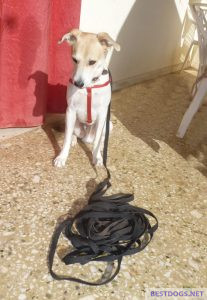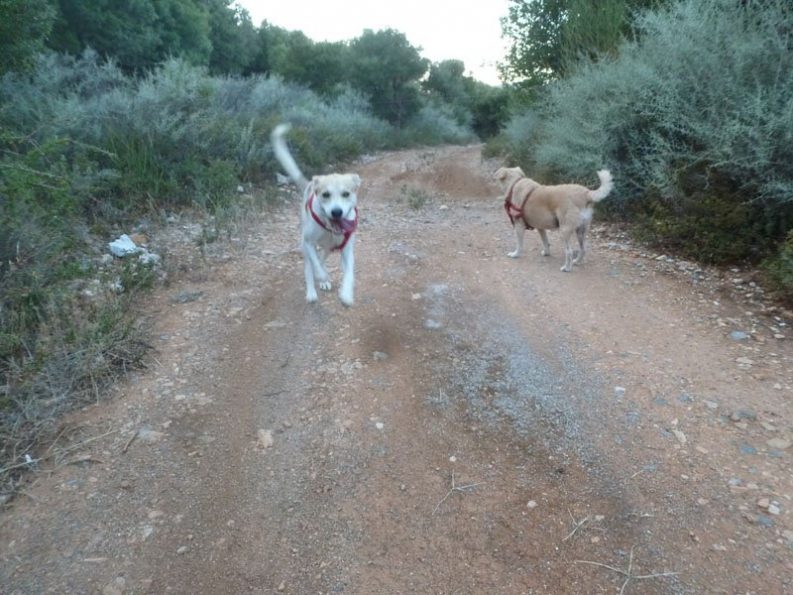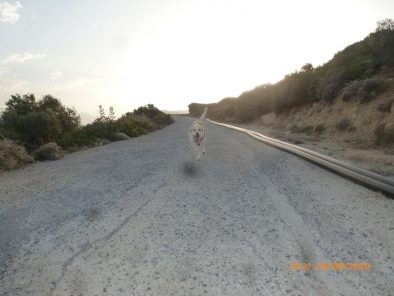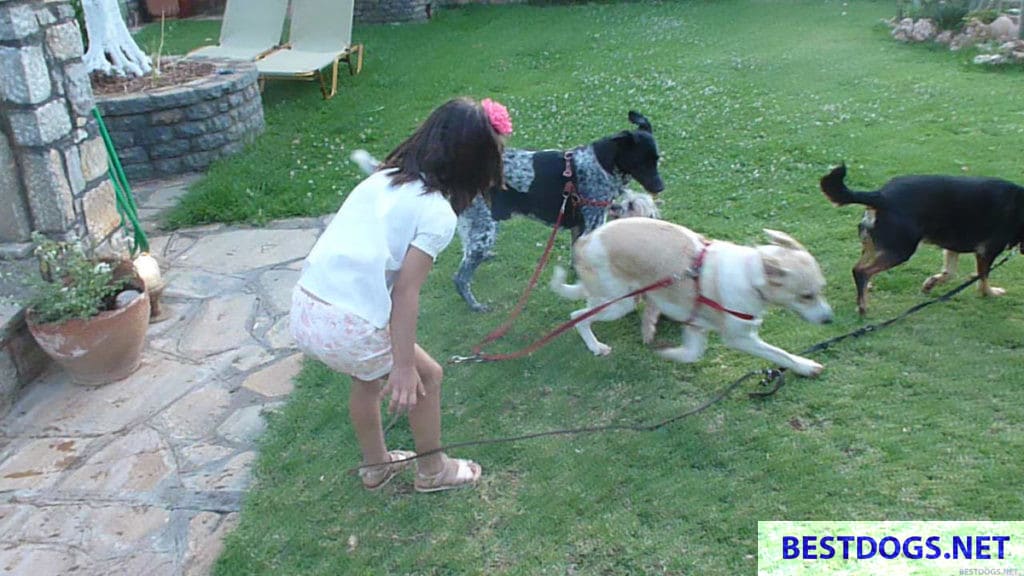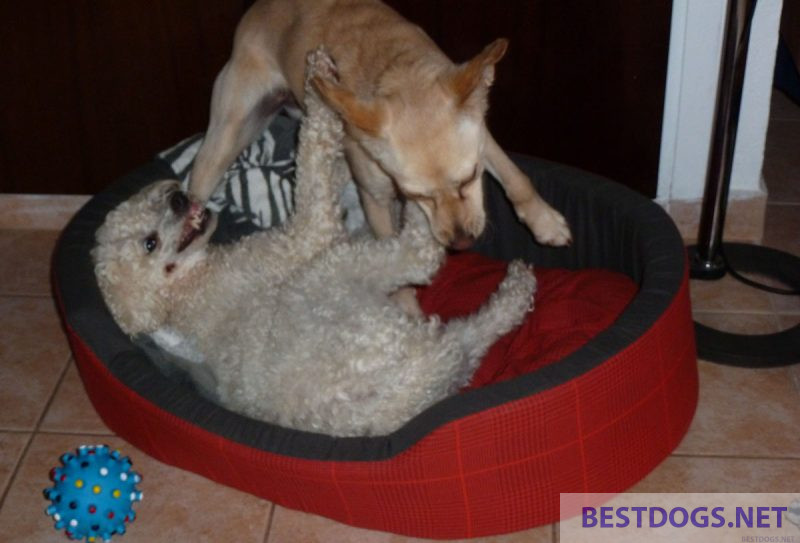Use and application of a long towing line for training, hunting and walking.
The towing, field or sweat leash and what to look for and which lines are suitable.
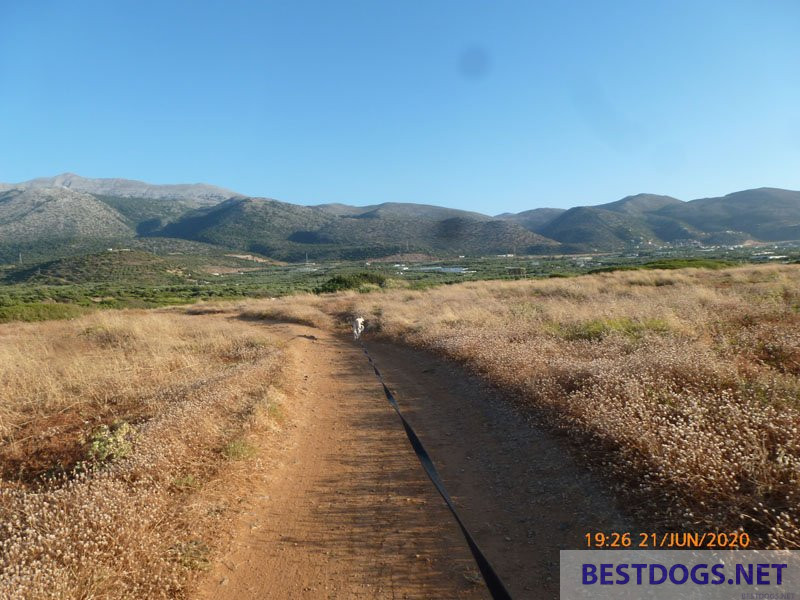
The long towing line has its origin in hunting and dog training. Nevertheless, in certain cases it can also be useful in everyday life when the dogs run out.
Greenies Pill Pockets for Dogs Capsule Size Natural Soft Dog Treats with Real Peanut Butter, 15.8 oz. Pack (60 Treats)
$17.25 (as of April 15, 2024 21:31 GMT +03:00 - More infoProduct prices and availability are accurate as of the date/time indicated and are subject to change. Any price and availability information displayed on [relevant Amazon Site(s), as applicable] at the time of purchase will apply to the purchase of this product.)Blink Outdoor 4 (4th Gen) – Wire-free smart security camera, two-year battery life, two-way audio, HD live view, enhanced motion detection, Works with Alexa – 3 camera system
$149.99 (as of April 15, 2024 21:31 GMT +03:00 - More infoProduct prices and availability are accurate as of the date/time indicated and are subject to change. Any price and availability information displayed on [relevant Amazon Site(s), as applicable] at the time of purchase will apply to the purchase of this product.)SHEBA PERFECT PORTIONS Paté Adult Wet Cat Food Trays (24 Count, 48 Servings), Signature Seafood Entrée, Easy Peel Twin-Pack Trays
$25.98 (as of April 15, 2024 21:31 GMT +03:00 - More infoProduct prices and availability are accurate as of the date/time indicated and are subject to change. Any price and availability information displayed on [relevant Amazon Site(s), as applicable] at the time of purchase will apply to the purchase of this product.)Long towing line
Table of Contents
Sweat leash
The sweat leash is used for hunting dogs and was traditionally processed in leather. Since this quite expensive leather sweat leash absorbs water when damp, easily gets tangled up somewhere if it is not made of one piece, the seams loosen and tear when subjected to hard wear, it is nowadays more suitable as a decorative piece.
In any case, today a long plastic leash made of much better materials is more contemporary. For example, there are nylon sweat leashes in a length of 12 yards, which are not only cheaper than a comparable leather leash, but also lighter and do not soak up water.
In the warning colors red or yellow, the plastic leash is also easy to recognize and to find again, if the dog has gone through with it once or you have accidentally dropped it somewhere.
Furthermore, a good plastic leash is not smooth like a leather strap, but ribbed, so it cannot slip through the hand so easily.
A hobbyist can also easily make his own sweat leash. To do this, one gets absolutely tear-proof ropes in a hardware store, which are also used by mountaineers. These are available as yard ware in different colors and strengths. Ideally they should be 0.2 inch (5 mm) thick. This product is inexpensive, weather-resistant and does not absorb moisture.
The interfaces are welded together with a lighter or match. At one end add there a stable hook or lockable metal buckle. The rope is simply pulled through the hook, tied up tightly, sewn or fixed with superglue.
This homemade sweat leash can be folded very tightly and fits easily into the coat pocket and is extremely stable at the same time.
Towing line
A strong dog can outline the handler or the leash can become tangled around the legs, which is not without danger and can lead to injuries. It is also possible to burn one’s hands or make cuts when the long leash is pulled through the fingers by the pulling dog. Gloves, possibly with exposed fingers like those used for cycling, can help here.
It is therefore important to be cautious and to recognize possible dangers in time, for example when the dog, led by the towing line, discovers another quadruped or cat and wants to run there suddenly. The acceleration of the dog together with its weight when it reaches the end of the leash leads to enormous forces, which one can hardly resist especially on unsafe ground and downhill.
Here a rubber piece at one end can help to cushion the towing line and the middle section of the line should always drag on the ground anyway. It is not possible to avoid that the towing line gets dirty with dirt and dust, as well as hands and possibly clothes.
It is important for the dog to have the feeling of being able to walk freely and still be in control. This makes it much easier to train the recall and to recognize when the dog wants to go through and which situations you have to be prepared for or where there is still need for practice.
Especially young dogs, but also older dogs with little experience on the towing line, are very unfocused at the beginning and throw themselves with full power into the belt and follow the first best trail. Therefore, the dog should also wear a harness so that the enormous forces when reaching the end of the long leash do not cause serious injuries to his kink and neck.
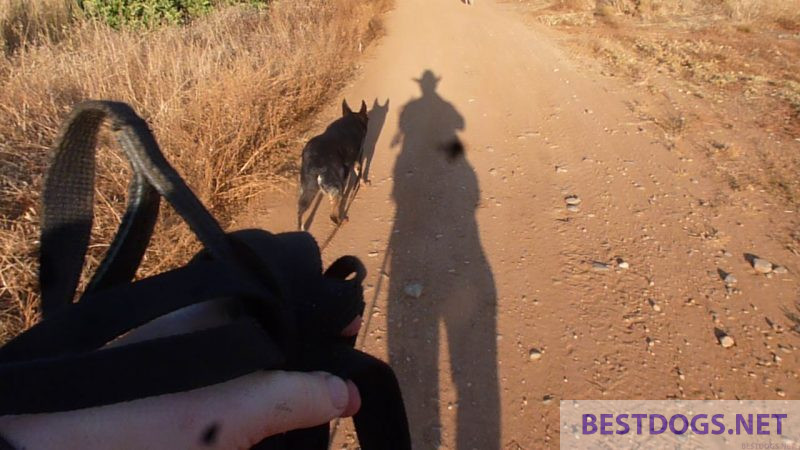
The dog at the sweat leash while hunting
The dog is still connected to the handler by the sweat leash or even the long towing line, just like with an ordinary, normal leash. This means that the emotions and insecurities of the handler are ‘wired’ directly to the dog.
However, the success of the hunting dog in tracking the game is essentially dependent on an uninfluenced work in its tracking. All other influences, such as emotions, encouragement and corrections transmitted over the leash, are hindering and lead to long-lasting misconduct, depending on the dog’s strength of will and tracking loyalty.
If the dog realizes that it is best for it to follow the handler’s intuition, it will leave the actual track and follow the handler’s intuition. A dog registers every movement of its handler over the leash, even when there is complete silence.
This behavior is undesirable with the hunt-dog admittedly, one can make use of this for its four-legged housemate with the exercise with the towing line, however. If the house-dog prefers to follow the inspirations of the owner instead of its drives, one has to reckon with fewer problems later with a complete free running dog and the recall succeeds more simply.
With the hunting dog against it, it is meaningful to give it much free line and to wait simply where it finally turns. Calm and experienced dogs succeed so mostly in untangling the tracks and finding the game. Interference, even a well-intentioned encouragement, quickly leads to insecurity or request at the wrong moment and the dog follows the wrong trail.
Therefore, it is important to train the hunting dog with artificial tracks and to study its reactions. Punishment or reprimand in case of the dog’s mistake is the wrong signal, because the dog will then act unwillingly and helplessly cautiously when tracking.
Video about dog on the towing line
Training with the towing line
The towing line is used for dog training, or if you want to give an ‘unreliable’ dog more freedom of movement when walking. By ‘unreliable’ we mean dogs that generally listen to their handler, but when they see a cat, sheep or other supposed hunting object, they can forget everything for a moment.
It should be noted, however, that enormous pulling forces are at work when a large dog suddenly starts and then reaches the end of the towing line at full speed. Burns to the hand without gloves or more serious accidents after a fall up to broken fingers, hands and arms are then possible.
If the towing line is attached to the body, even got caught between the legs, a fall in this situation is hardly to avoid. It becomes especially critical downhill if one is pulled by the dog and stumbles. Solid footwear is an effective help beside gloves.
Therefore you should start with shorter leash length for the dog and test the limits before you try it with 10 or even 20 yards long towing lines. Also, the safe stopping of the dog by stepping on the towing line must be practiced.
The dog also needs a harness for the same reasons, so that it does not seriously injure its neck when it is braked hard. A rubber section at one end takes some force out of the pull when the end of the leash is reached.
The towing line is mainly used for training to give the dog enough space to practice commands, such as retrieve the dog, test its hunting instinct and study its behavior. The dog then also gets used to it, without leash only a certain distance from the leader to keep. For this purpose, the towing line is also a suitable training method for rescue dogs, which have no experience on the leash and with commands.
If the dog behaves reliably in its radius, one can increase the length of the towing line until one uses the full length and drags it practically over the ground.
In doing so, the towing line is of course also pulled through undergrowth, mud and dust, which has the inevitable consequence that, in addition to clothing, fingers or gloves also become dirty. You should pay attention to this when choosing your clothes if you intend to go out with your dog with the towing line.
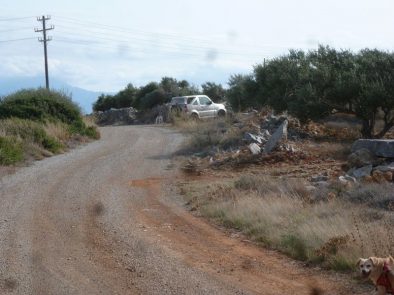
We also use the towing line to give more freedom of movement when going out with several dogs, even to the dog that does not stay reliably with the handler because of its character, if it has discovered something in the distance that arouses its interest and gets the irresistible desire to get there.
Thus all dogs of the pack have an almost equal freedom of movement and nobody feels disadvantaged. However, constant attention is needed to anticipate critical situations in time, when the dog starts to run on the towing line, and shortly after that either brakes hard or could otherwise outline its handler. This is very important especially with big and strong dogs and they should not have more than 10 yards of leash length, because beyond that enormous forces will have an unpleasant effect.
Which towing line for my dog ?
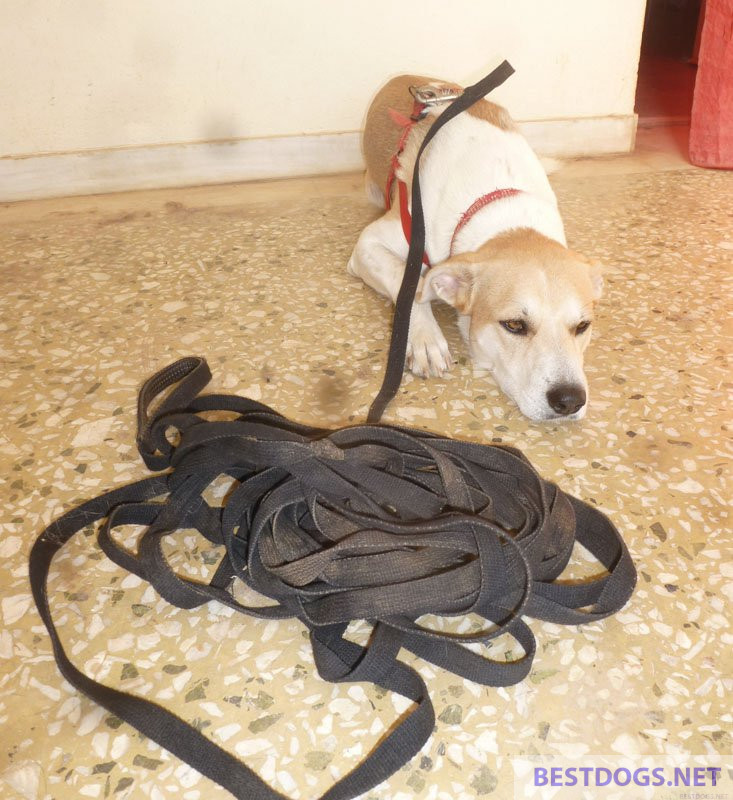
A good towing line is available in all price ranges. A line suitable for everyday use and dog training should be made of water-repellent, lightweight nylon. In addition, one should be able to handle it without gloves and it should not knot too easily.
Modern and very good towing lines have all the characteristics of a leather leash, but are easy to care for and have eye-catching colors. They are made of beta-biothane.
In addition to the length, the width or diameter of the towing line should also be taken into account when buying. For bigger and stronger dogs stronger and wider lines are necessary than for medium and smaller quadrupeds. This is important in order to ensure sufficient tensile strength when braking the dog, since, as already mentioned several times, large forces are involved.
In addition, the correct diameter can also prevent burns or cuts on the hand and it is also important that a small quadruped does not have to drag the thick and heavy drag line of a large German shepherd dog behind it.





